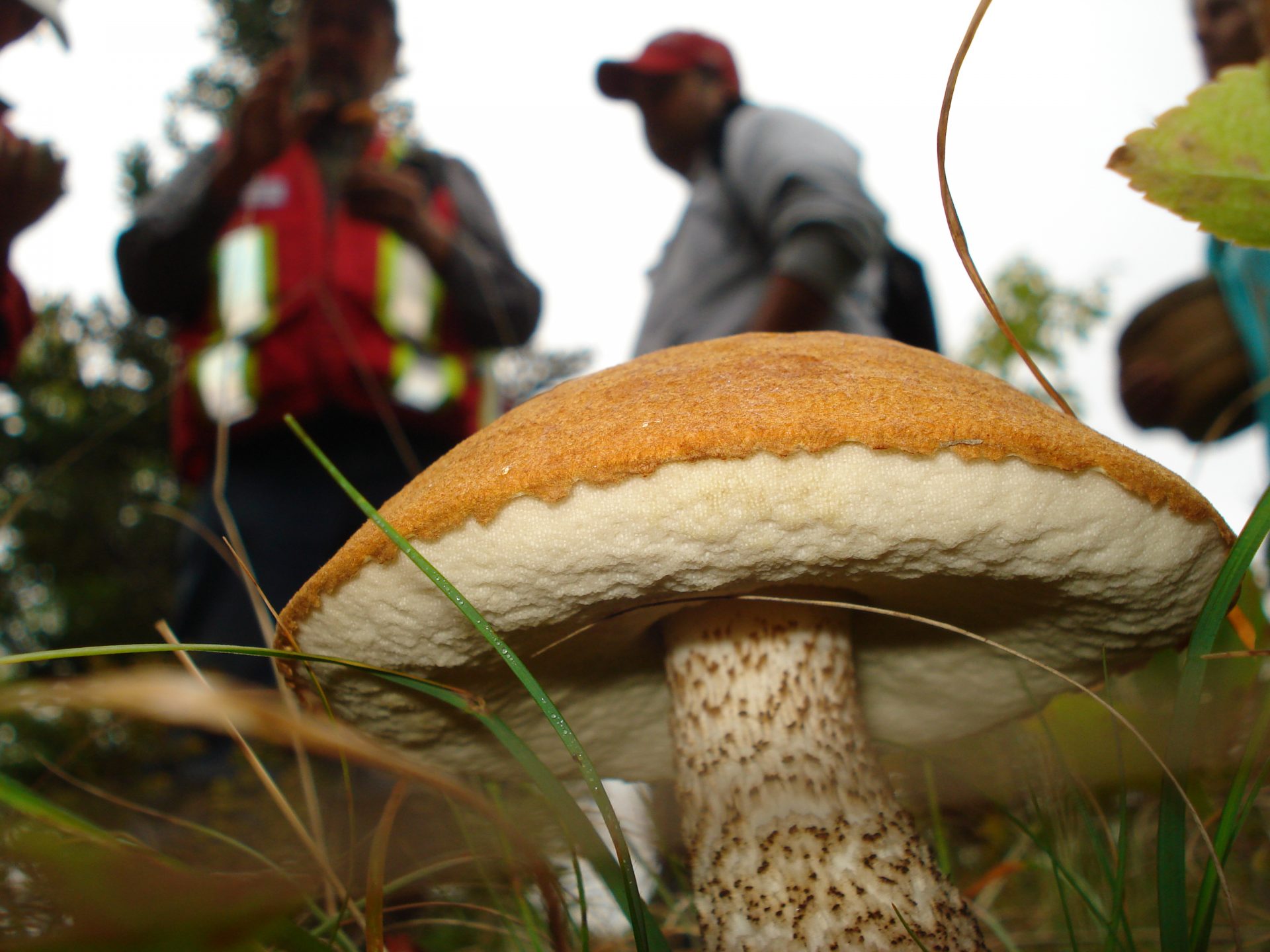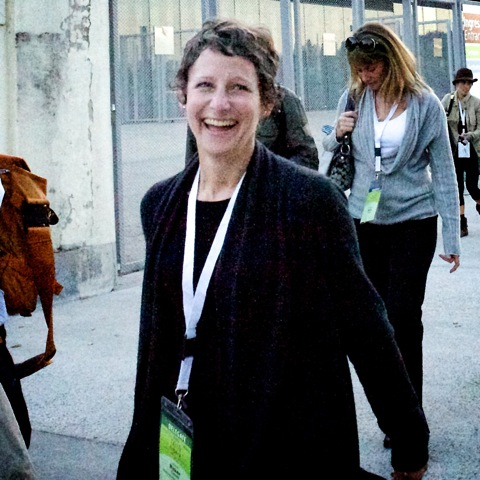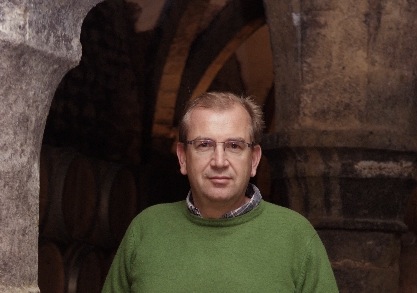by Zara Fischer-Harrison
There was action in the forests this past weekend as the burgeoning Nova Scotia Mycological Society completed their third annual foray. On a mission to collect and identify all mushrooms growing across the province, the members and guest mycologists tromped around in the woods to find as many specimen as they could lay their hands on. With 50 or so mycophiles and four experts, the group managed to find over 100 species which can now be cataloged, photographed, dried and stored at the Acadia University Harriet Irving Herbarium for further investigation and research purposes. Thanks to sponsors such as the White Point Inn, where the event took place this year on the southeast shore of Nova Scotia, Canadian Institute of Forestry, Parks Canada and Nova Scotia Department of Natural Resources, the organization is making headway in deciphering what and where is the breadth of myceliu covering the 53,338 square kilometers of the province.
Arriving on the evening of Friday, September 24th, an informal meet and greet was underway and participants, both new and experienced, milled about drinking chaga tea, made from, of course, a mushroom. Enthusiastic about learning over the course of the weekend, individuals’ motivations as to why each person was present were shared. The stories ranged from being intrigued by the medicinal properties of mushrooms, to a desire to be educated in wild foods and culinary uses, a love of taxonomy and data entry, to interests in the bioremediative capacities of mushrooms. The group was welcomed by directors Dr. David Boyle of Maritime MicroBiologicals, Bruce Stewart a forest ecologist for the Nova Scotia provincial government, and Brendan Hemens a gung-ho dad wanting to learn everything he can about mushrooms so that he can pass the knowledge on to his inquisitive kids.
After a good night’s sleep by the crashing waves of the Atlantic, the group was up bright and early on Saturday to meet and organize for day-long foraging along boreal forest trails. Four groups, each with a trail guide and an expert mycologist, spent about six hours collecting and carefully labeling each species in a brown paper bags then congregating back in the conference facility at White Point Inn to choose the most representative of samples. Some species could be identified just by looking at them, their characteristics unique, and some had to be left over night on black and white paper to check a spore print, while others were put under the microscope. The capacity to do DNA testing was a bit beyond the reach of this grassroots group, though there was a discussion of how it could be applied.
After the taxing effort in taxonomy, a mushroom-centric dinner was put on by Chef Alan Crosby using wild and cultivated mushrooms in a three-course meal, and paired with Nova Scotia wines. Tables of ten were animated in mushroom-related conversation, brainstorming where next year’s foray should take place, what the most interesting species were that they found that morning, as well as many discussions of how to highlight and prepare mushrooms in the kitchen at home.
On Sunday, participants chose to attend one of four workshops: “Chef’s Magic”, cooking with mushrooms with Chef Crosby; a “Pick for the Pot” forage for edible mushrooms to take back home with Scott Cunningham; “Identification Basics” learning how to and participation in further identification of the specimen collected lead by Gavin Kernaghan; or “Grow your Own” inoculating logs for Shitake mushrooms with Dr. David Boyle. All of the workshops gave participants a chance to delve further into areas in which they were most interested, and many participants got to partake in more than one. A recurring theme throughout the weekend, and at the workshops, was the message that when foraging for wild mushrooms, it is imperative that one knows EXACTLY which mushroom one has. Eating one on a hunch, or a “that looks close enough”, can make a person very sick, and be fatal in some cases. Even the experts note that they don’t put anything in their mouth before they are certain. It’s just not worth going into liver failure over some fungus, as exciting as it may have been to find it.
Mycological Societies are important organizations invested in discovering everything they can about a somewhat incomprehensible kingdom of living organisms. The spectrum of species is very broad; millions around the world. Fruiting patterns, being so interconnected with other trees and plants, make it next to impossible to determine where mycelium will decide to break through the surface, grow into a mushroom, and release its spores. To study these behaviours and patterns, it is essential that many people come together to share knowledge. Knowledge of what can be eaten by humans, and what causes fatal sicknesses; knowledge of how mushrooms can heal, nourish, and inspire; knowledge of uses of fungi in art and culture; and knowledge of how mushrooms play a significant role in nature. Organizations such as Maritime MicroBiologicals, are conducting research and tests, for instance, on how mushrooms can degrade preservatives in treated lumber, or how fungi can eradicate carpenter ants in a house. Particular mushrooms can also remediate soils and when used in compost teas can help prevent blight on crops. This powerful bioremediator and the use of good fungi offers a new alternative to chemical fungicides for agriculture, and as an alternative to the common “dig and dump” techniques of soil remediation tipping the scales in landfills. It is, in this sense, very important that more people get interested in mushrooms or at least advocate for the conservation of the environments in which they grow. In forests, wetlands, fields, and shores, all over the world, groups like the Nova Scotia Mycological Society, will welcome you with open arms.
Other resources:
North American Mycological Association
 Splitting her time between Toronto and Wolfeville, Nova Scotia, Zara Fischer-Harrison is a perpetual pupil of all things food. She works and plays in various capacities in the good food movement. Read her blog at http://foodandpassion.wordpress.com/
Splitting her time between Toronto and Wolfeville, Nova Scotia, Zara Fischer-Harrison is a perpetual pupil of all things food. She works and plays in various capacities in the good food movement. Read her blog at http://foodandpassion.wordpress.com/













Oh, I do wish those lovely photos had captions (hint) – I was talking about the [above] large, glazed-bun topped mushroom last night (Boletus Leccinum?), 2 dinner companions had brought various wild picked ones (we used them in a mussels in arribiata dish. MM!) but had passed these big domes by. They were warned off of them?! Oh well.
Ciao, Bella!
Ahhh, captions, eh? That would have been a good idea. Oopsy-daisies!
The slippery looking ones are Slippery Jacks, or Suillus luteus, I think. They are edible, for some people, but VERY slimy when cooked. It is recommended that the top super slimy membrane on the cap be removed, but even then, still really slimy. Almost like adding snot to your meal. Believe me, you don’t want to make the same mistake I did.